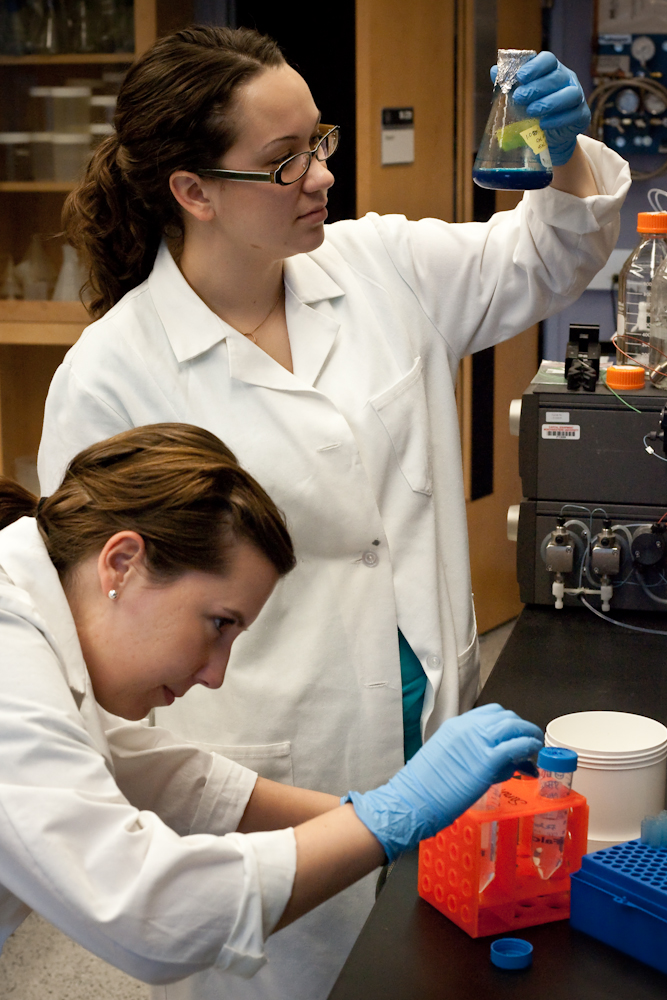Did you know that males require estrogen for many key biological processes, including spermatogenesis? Actually, many of the actions thought to be caused by testosterone in males is actually caused by estrogen signaling instead. These are some of the cool facts about estrogen signaling that were covered in the most recent Institute for Women's Health Research hosted talk by Dr. Jeffrey Weiss, entitled, "The complexities of estrogen signaling."

Photo: Huge Galdones
Estrogen itself can target the brain, heart, bone, breast, and the gonads in both men and women. It is lipophillic, which means it is soluble in fats rather than water. This is how estrogen can so easily pass through the fatty membranes surrounding or cells. Estrogen acts through the estrogen receptor (ER). The estrogen receptor is a protein that consists of three regions: it has a part (or domain) for binding to DNA, a domain for binding to other proteins, and a domain for binding to estrogen.
When estrogen binds to the ER, it can then work in several different ways. First, in classical signaling, the ER moves from the cell membrane to the nucleus, and binds directly to the DNA in order to cause the expression or repression of certain proteins. Second, in non-classical tethered signaling, the ER moves to the nucleus, but it binds to other proteins bound to DNA, rather than directly binding to the DNA. Lastly, in non-classical membrane signaling, the ER does not move to the nucleus, but rather binds to other proteins at the cell membrane.
It was thought that most of the actions of estrogen in the body comes from classical signaling, but recent data suggests that non-classical signaling is actually responsible for many of these effects. In fact, there are many outcomes of completely inactivating the ER in animals that are then restored by allowing only non-classical ER signaling to occur. These include the presence of large blood-filled cysts in the ovary, an underdeveloped uterus, the creation of sperm in the male, and fluid reabsorption in the testes.
This is obviously a huge field of research, but Dr. Weiss did a great job of laying the foundation for a basic understanding of the work being done. For further information, I highly recommend you check out the basic research papers that he referenced most heavily in his talk:

Comments